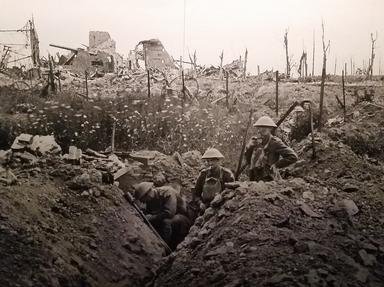
World War I Collection Trivia Quiz
This mixture includes people, places and battles associated with the First World War, and some which aren't. Pick out the answers which belong to this war and avoid those that are part of World War II.
A collection quiz
by rossian.
Estimated time: 3 mins.
- Home
- »
- Quizzes
- »
- History Trivia
- »
- War History
- »
- World War I